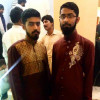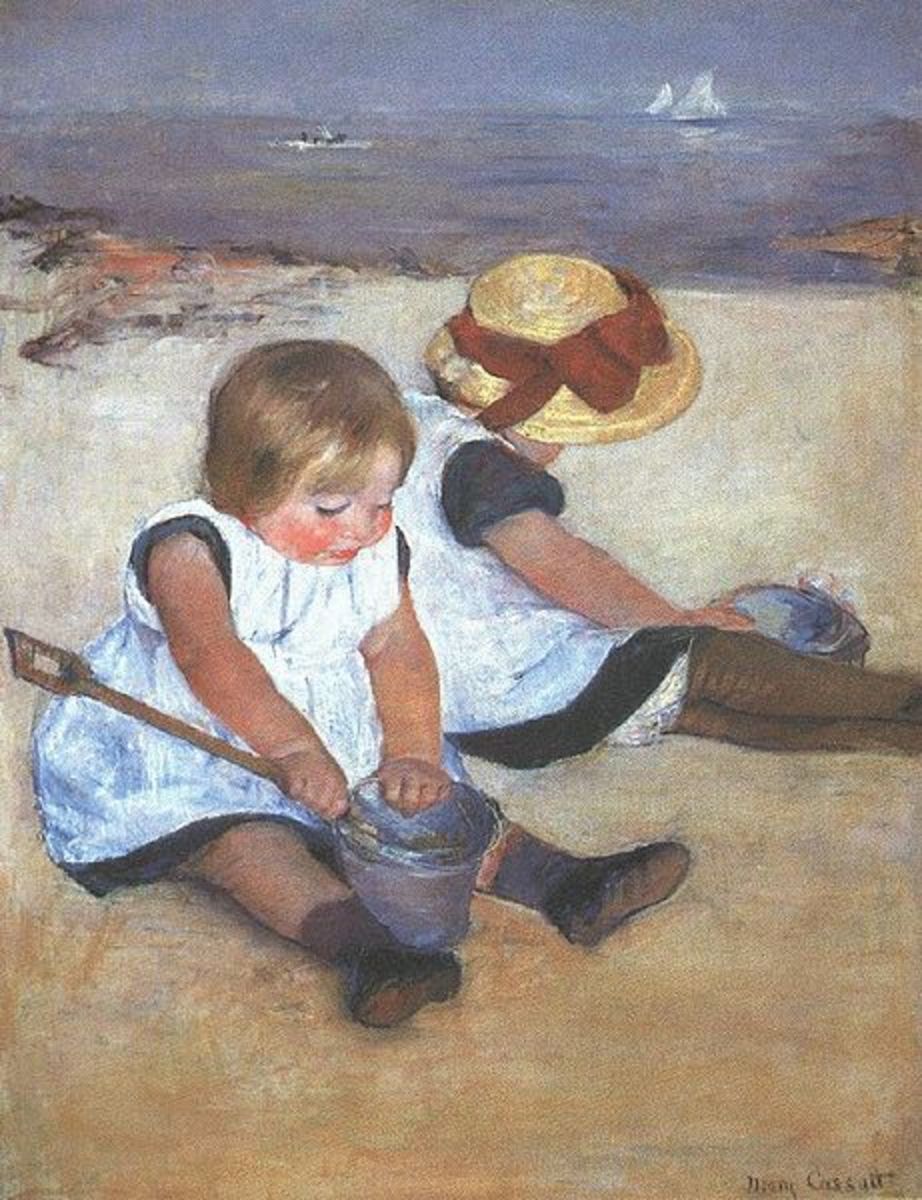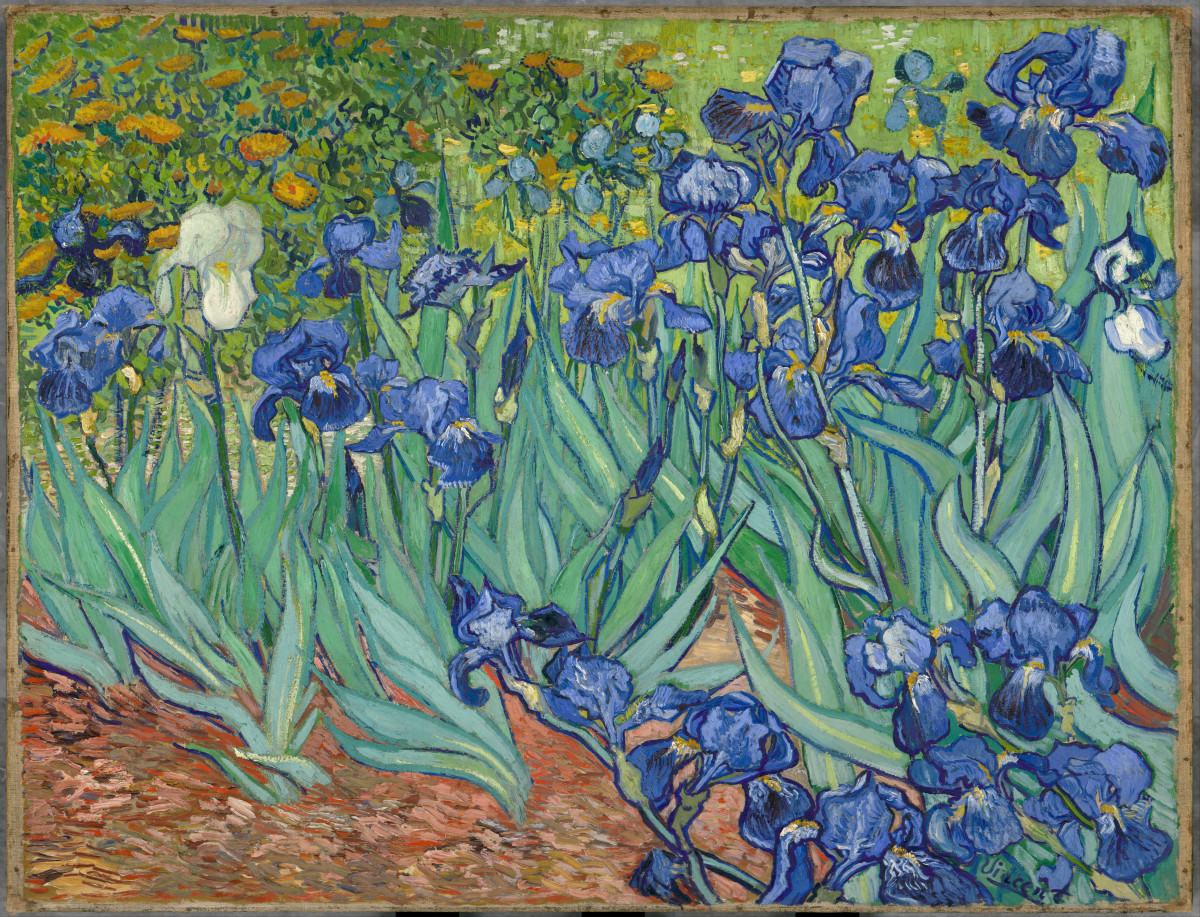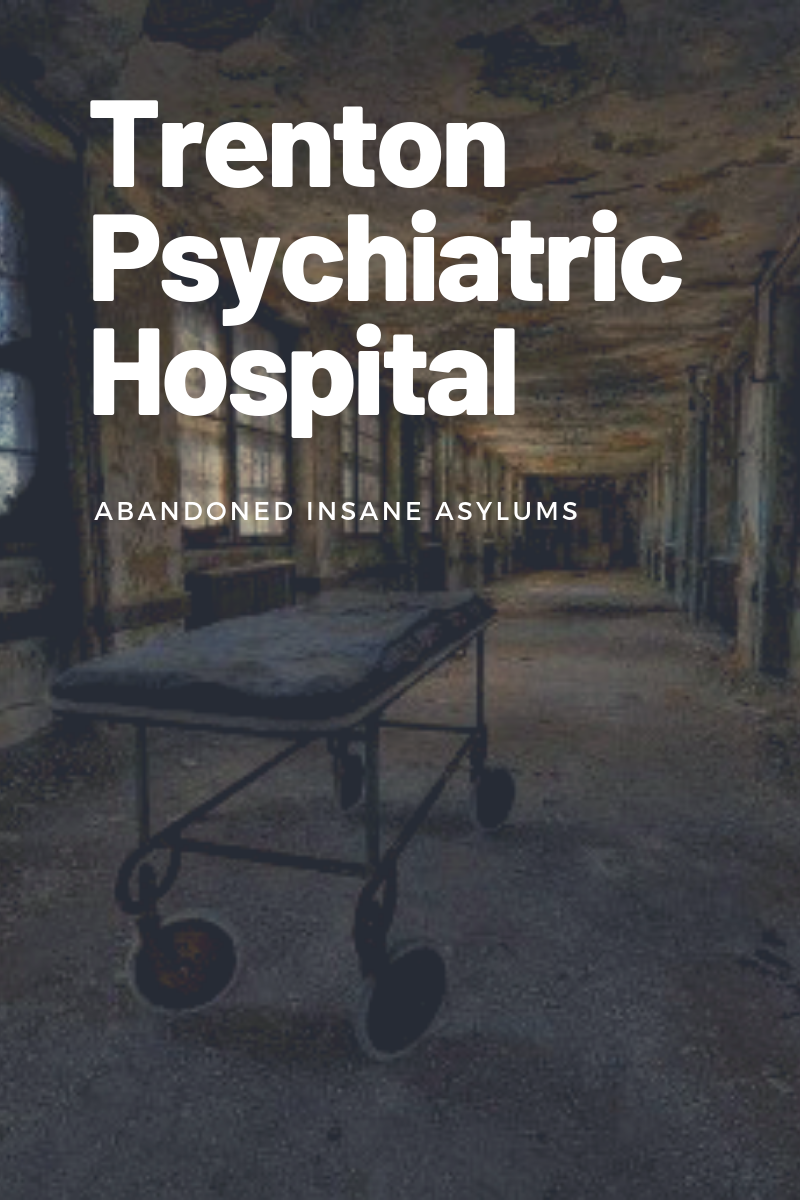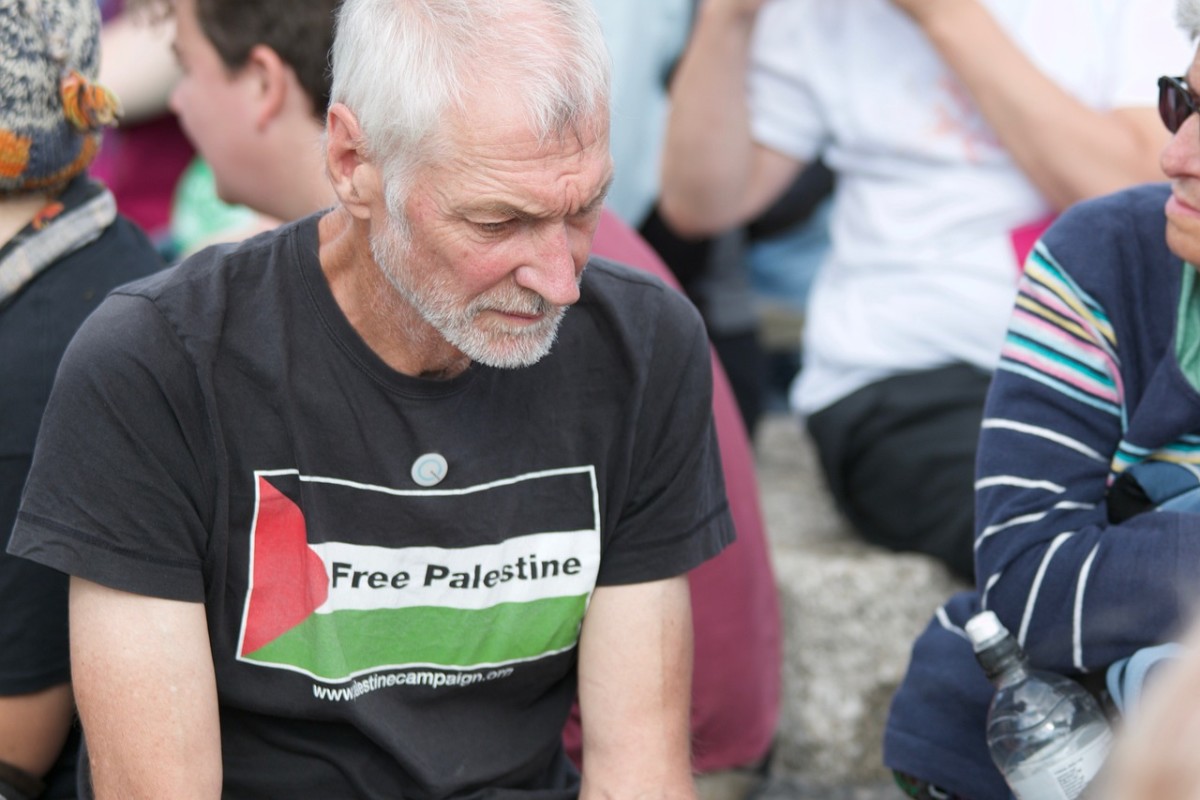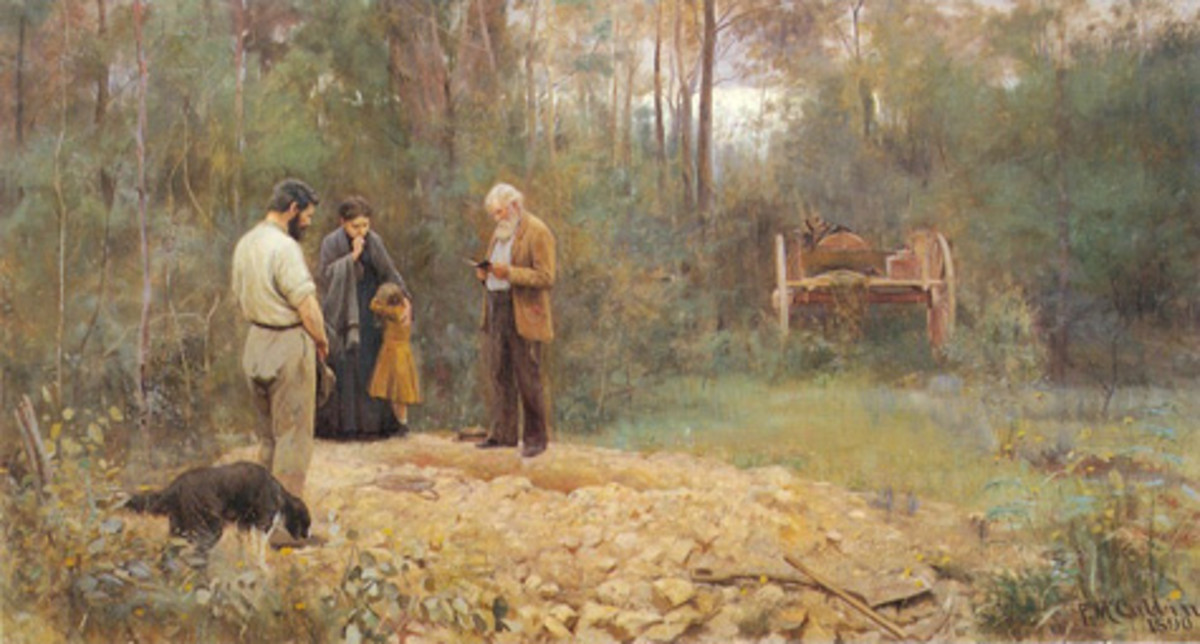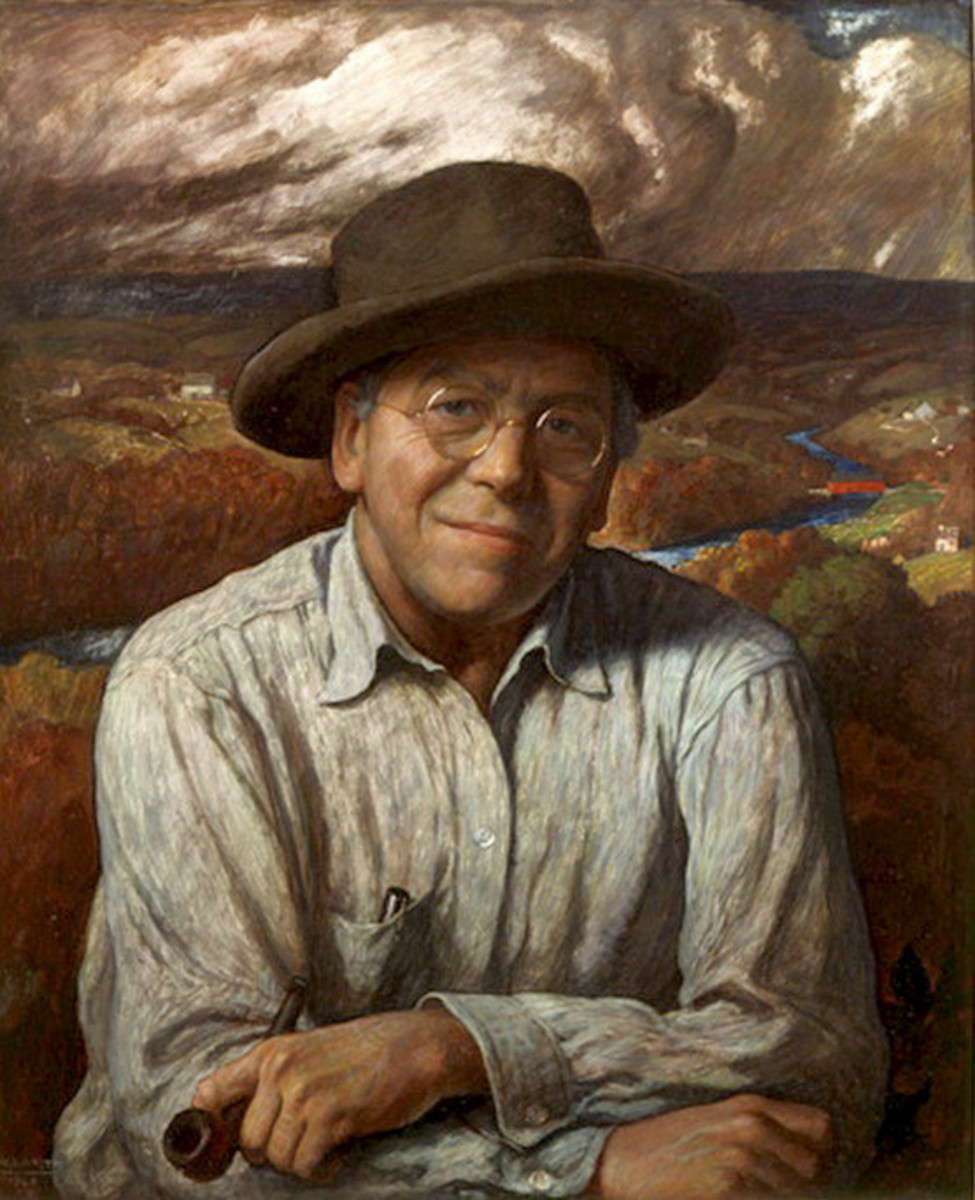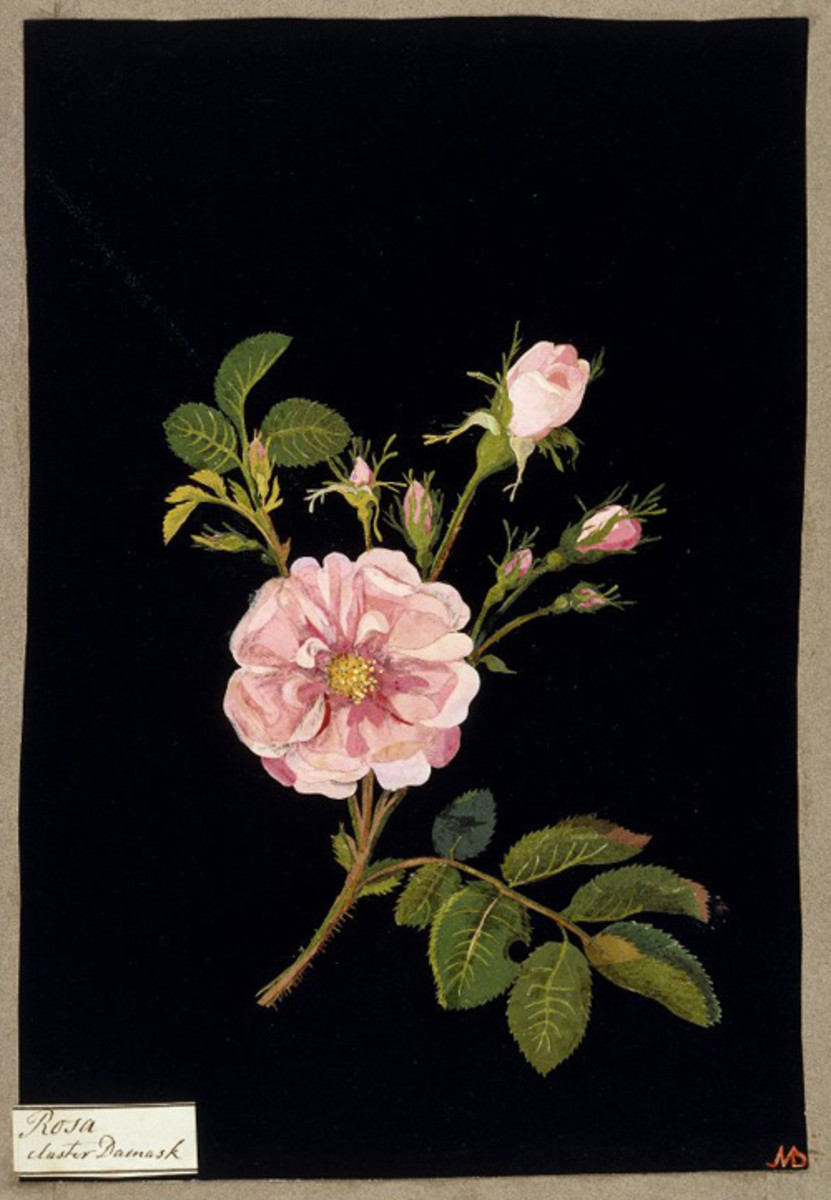Abdurrahman Qattani... a Life "in the Shadows of Zinko"!
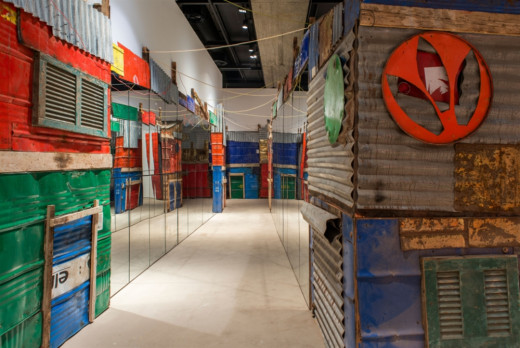
If it had not been the occupation, it would not have been asylum, no forced exile or the diaspora. In his new exhibition, "Brainstorm", the young artist presents a miniature synography that reflects a camp for Palestinian refugees in Lebanon.
Abderrahmane Qattani (1983) converts the language of recourse to an artistic language. But between the transformation and dialogue is the journey of "brainstorming" – the title of his new exhibition - long, the journey of the a-z, does it become with it the spatial space of forced exile or the refugee camp an artistic picnic. In the museum space of The Salih Barakat Gallery, the young Palestinian artist built a "storm of ideas" in the form of a miniature synographic installation, which simulates a camp for Palestinian refugees in Lebanon. This processing/landscape construction was central to the exhibition. A mirror-paved space that gives the visitor a space of visual immersion in the synography, but quietly strolling through the landscape and contemplating it. The exhibition may be divided into four sections: portraits on the layers of circular oil barrels, installation and assembly, and then the installation of a large synographic/scene like the zwarib refugee camp and its mazes. Then you meet all: a wave.
Equations of Reality
If it had not been the occupation, it would not have been asylum, no forced exile or the diaspora. To be precise: If the Zionists had not usurped the land, there would have been no refugee camps for Palestinians, and there would have been no forced exile inside and outside the land, and there would have been no forced exile.
For more preciseness: Had it not been for the Zionist occupation, its system and its project, Palestine would not have been self-exiled. The cause necessitates the result. Simple equations based on reality, a reality of living life. This is where Alan Capro (1927-2006) says: "Life is much more important than art". In this sense, the pioneering avant-garde artist abbreviates his concept and his choice to go beyond the flat space, to the limits of performance, processing, assembly and, most importantly, to the "event". Here we recall The Saying of Capro, not for comparison at all, the work of a teacher Capro was founded on an artistic style and a large current that extends and extends to this day. A current that directly influenced the history of contemporary art that followed him. But in evoking this, it is the living reality that drives the orchestra of art, and art is only a variation on the basis of reality: the reality of living life.
To what extent does Abdul Rahman Qatanani's work lead us to and to reality? From the asylum camp. And to him? Or further?
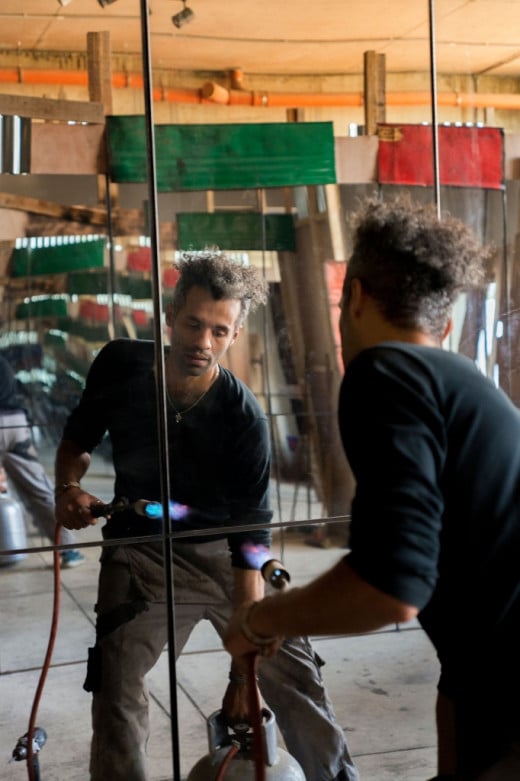
30 Minutes Away from the Realist
The Abdul Rahman Qattani Exhibition offers the viewer some space of interaction, or even a form of immersion. But is it an immersion with the basic reality to be conveyed, namely, the Sabra camp for Palestinian refugees in Lebanon, where Qattani was born (30 minutes away from the "artistic" venue)? And maybe, with all the asylum camps? Or indulging in a miniature artistic setting — an aesthetic dimension — of that living reality? Here it should be noted that everyone who has lived in an asylum camp one day, and anyone who has visited a Palestinian refugee camp — at least on Lebanese soil — will see this artistic model of Qatani very elegant, and almost clean, immaculate in relation to the tragic reality within the asylum camps. This work is first and foremost: my art. Certainly, coding is more present than the statement at Qatani, although at first glance it may be inversely prepared for the opinions. The plastic pattern in which cotton work has been defined over recent years, from the installation and assembly of various materials. The first of which is the zinco panels (synthetic iron synthesized) and the barrel slabs of oil and wood, with its fofy/brutal color options: from yellow-first and crimson red as a zinfer dye, or a lean blue closer to the azure pigment. All of them allow this coding to be read: purely morphographic, how to melt and refine cotton, and then easily, comfortably and without dimensions, by rebuilding it in mind at a vast aesthetic distance from reality. What about the details of the exhibition and its different sections?
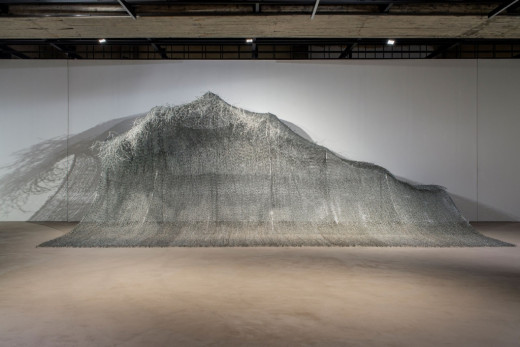
Oil Circles
With a loud, loud silver and orange voice calling us nine circles, we race the stairs down, hurry our steps to decipher the call. As the layers of barrels of oil, Cottonani sat with portraits of influential figures in his opinion on the course of the history of oil trading in our region, leaving the internal void in the composition says his pictorial speech: Yasser Arafat, Carlos, and women from the Arabian Gulf region. The circular layers on the wall are hung to receive the visionary. There was undoubtedly the visual discourse separating three technical stages of cotton production: composition and assembly on the one hand, synographic construction on the opposite bank, and later processing.
Shades of Zinko
We turn left and walk towards the second section, where works of installation and assembly transformed into forms of everyday life are also hung flat on the wall. They're probably kids playing. Their shadows are great. Their games are simple. They are almost without worries, or they know them and are good at being distracted (aren't all children are?). The compilation here explicitly refers to understandable and clear forms. All of them are "in the shadow of zinko" (mow iron), "we live in the shadow of zinko in the camps, and my people will mislead Zinko as long as i live in this environment and this camp (asylum)" says Qatani. This is not the case, not the collection and installation of Louise Navleson (1899-1988) or the builder Vladimir Tatlin (1885-1953), whose work cannot be combined and installed without recall, nor even the compositions of Minoro O'Hara (1950), although some cotton assemblies have for a moment technically interacted with these feats. For Ohera, which dates back to 1995.
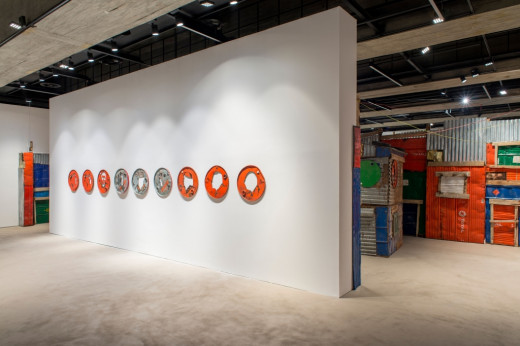
Qattani's insistence on painting a clear picture and form of opinion sending an optical discourse that is understood by all often takes the broader space from the discourse of material and technology and its conceptual dimension. In doing so, cotton is contrary to the large compositions and assemblers in the importance of giving them the full ether of the material – only – to say what you want. Cottony only allows her to encode the initial, so that he returns and wraps it in the clear form of people, games, etc. Some of cotton's works also remind us of a special technique in Gordon Wagner's compositions (1915-1987), windows, wooden doors, etc. mixed together, giving a somewhat similar flavor to any composition using the same mixture. A cotton work thus transforms the axiom — at the purely artistic level — with compositions in Gordon Wagner's language. But did Wagner know the alphabet of Zinko? The alphabet that goes into the structure of everything in Qattani, and this is a true scene from his childhood: um Kulthoum's voice in the background, Abdul Rahman in his father's lap hears the song and doesn't understand anything (perhaps the words of Salah Jahin). The celebration ends. The audience applauds warmly. "Me and a kid. I'm getting messed up!" Yes, Zinko: The alphabet of Palestinian refugees in Lebanon." Only the people of these very camps will know it.
Do Mirrors Reflect the Planet of the Perks?
Time is fast and little to visit one for this show. We try to pick all his minutes, complementing our course with the clock left, to the third section. Here practically the large space in the gallery, allocated to the size of the building processing, or the synography/landscape that symbolizes the model of the asylum camp. The work is approximately 16 meters high, 3 meters high and 100 meters high, dating back to 2017 and was exhibited exactly two years ago at the Magda Gallery in Paris. We see once again the visual signature of Cottonani, which we have come to understand clearly in its alphabet: Zinko panels, iron and wood, with the addition of an important dimension with their understandable dimensions - interactive as technical - plastic, are from outside the worlds of the camp zwaribi: mirrors. The game is undoubtedly dangerous. Walking on a thin rope between the ease of consuming mirrors and a new development of the material itself is almost a very precise acrobatic task, which only those who have trained for so long will be able to do. Mirrors, yes. An additional element that goes into the cotton-forming game, but not with the intention of employing the material institutionally, as much as it is present to expand the place and amplify the dimensions, as well as to invite the visionary intuitively to indulge in the synographic processing model. This is not the time to restore the important part of the history of the visual arts related to the techniques of mirrors and their employment, nor to recall the structural installations in the history of art to devise the lessons.
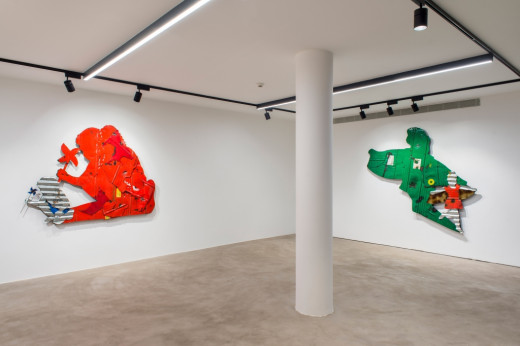
But walking in the landscape forces us to automatically return to the wizard of processing and construction, the great teacher Kurt Schweiters (1887-1948) and his rebuilt installation at the Berkeley Museum of Art, in a pioneering and excellent attempt at the installation of art. Of course, cotton is not required to form models of this magnitude, neither in terms of concept and technical depth, nor in terms of the accuracy of the material and the evolution of its composition. But we ask optimistically — as we face a processing construction — what or how, how do you see a new cotton will be presented to us in the next stages? We continue the path in Zaroub the equipment/landscape. Zaroub has an elegant path, tidy and clean as mirrors. Here there is no risk of slippage, no leaking water in summer and winter, no heavy-hanging electricity bars — yes, some of them are for encoding — here, no drivers to jump from, no tangles in the visitors to try to solve their maze. Here there are no obstacles to your circus, no real fatigue, no shadow from the slums inside the asylum camps. Here, in short, there is no "planet of the perxat", but a reassurance and an art — a form — that gives the beholder a beautiful, artistic and reassuring aesthetic image (all the children of the camps?). So you complete your circus with complete comfort, contemplating the artistic composition with its "aesthetics", and reaching the fourth section.
Between Barbed Wire and Freedom... Liberation March
The view is of a large area contrary to Zaroub's landscape narrowness. You automatically give your back to the synography of the asylum camp model, and receive: a wave. Eight meters wide and three long: a high wave of iron and barbed wire. The high professionalism and level of effort that has been put in full force imposes time to contemplate. This work by all technical and technical standards is huge, important, distinctive and strong. We actually get a real process that performs its artistic function precisely, changing spatial space and moving us beyond the frame of direct synographic landscape, into a world of sewing of barbed wire carpets. It's obvious that Cottonani is empowered. He is fluent in her language, both technically and conceptually. Cottonani makes all the forms he wants from his dough. Every dough baked with truth and love must satisfy the hearts. This dough is composed of an integrated optical system. Here he really succeeds, whether it's moving the symbolic dimension to its limit, or the technical and artistic dimension to the highest possible craftsmanship. We also ask with optimism: where will he take us in the next phase of his work?
"As Palestinians, we live in the camp, as if we were in a vicious circle and a closed circle. From generation to generation we always ask the same questions, and we wait for the answer. We try to find answers but we don't find them, we conclude that we haven't had the answers for 70 years. If we want to look for freedom, we must first get rid of the barbed wire inside us," Qattani says in his latest video. Will his next exhibition start here? And what door will the asylum and exile reopen towards artistic production?
When will we start as Arab and Palestinian artists to produce human art that will draw the "HALA" from the "HALA", not from violations? The barbed wire, with all its coding dimensions, used by Qattani, is a basic ally of occupation. We will be free from it once we are liberated from the Zionist occupation. We free the beauty of our cultural and artistic product after the removal of the system and the Zionist project. The equation is this: if it had not been the occupation, it would not have been asylum, forced exile or the diaspora. It was not an artistic product that transmitted cries of human violations, by coding or speaking.
For accuracy: With the end of the occupation, the cause of asylum and its camps, forced exile, the diaspora, and the product of the walls of apartheid, which broadcasts cries of violations, is denied through barbed wire barriers and wires.
More precisely: with the demise of the Zionist system and project, our cultural and artistic output is free, not free (if anyone is delusional about such a possibility) nor liberated (they love among the mines that remain in the tal Zaroub refugee camp). Yes, the equation is simple: the disappearance of the cause necessitates the end of the result. When do we address the causes?
It's a dream. But "God has a promise" as Salah Jahin wrote, "And dawn is long, who is keeping him from being swallowed?"
* "Intellectual storm" by Abdel Rahman Qattani: Until the end of this month - "Sabeh Barakat Gallery" (Clemenceau- Beirut) - To inquire: 01/345213
This content is accurate and true to the best of the author’s knowledge and is not meant to substitute for formal and individualized advice from a qualified professional.
© 2020 Hafiz Muhammad Adnan
